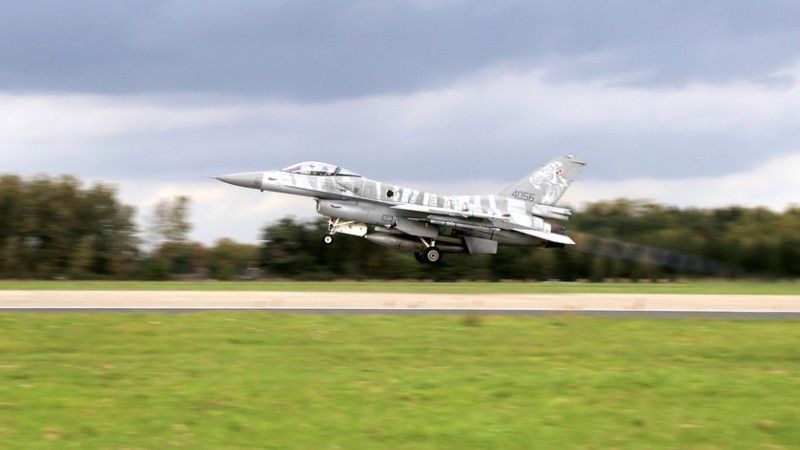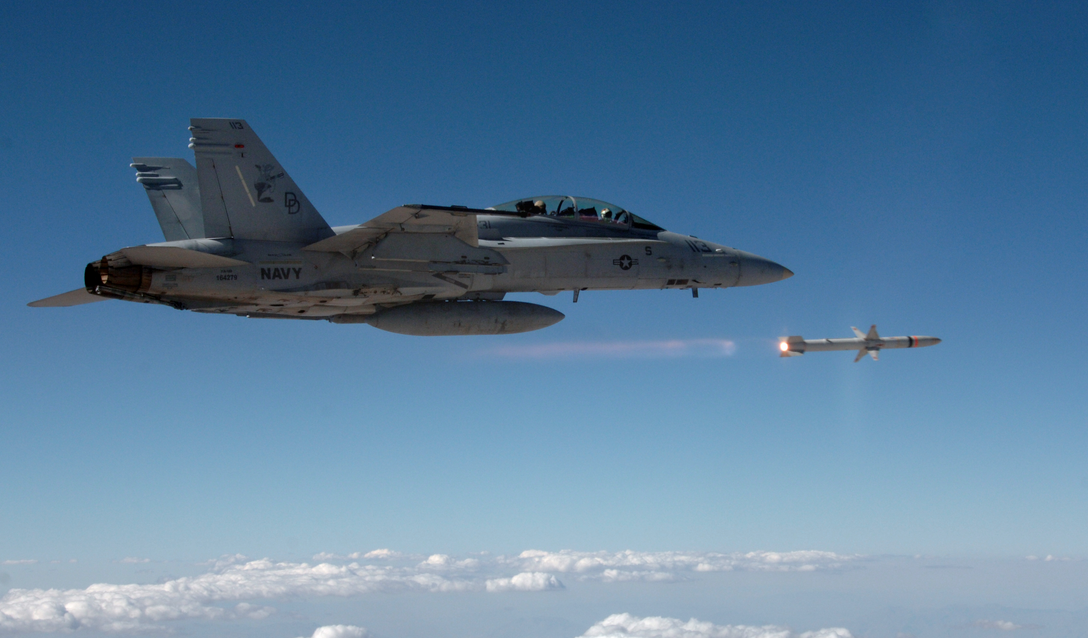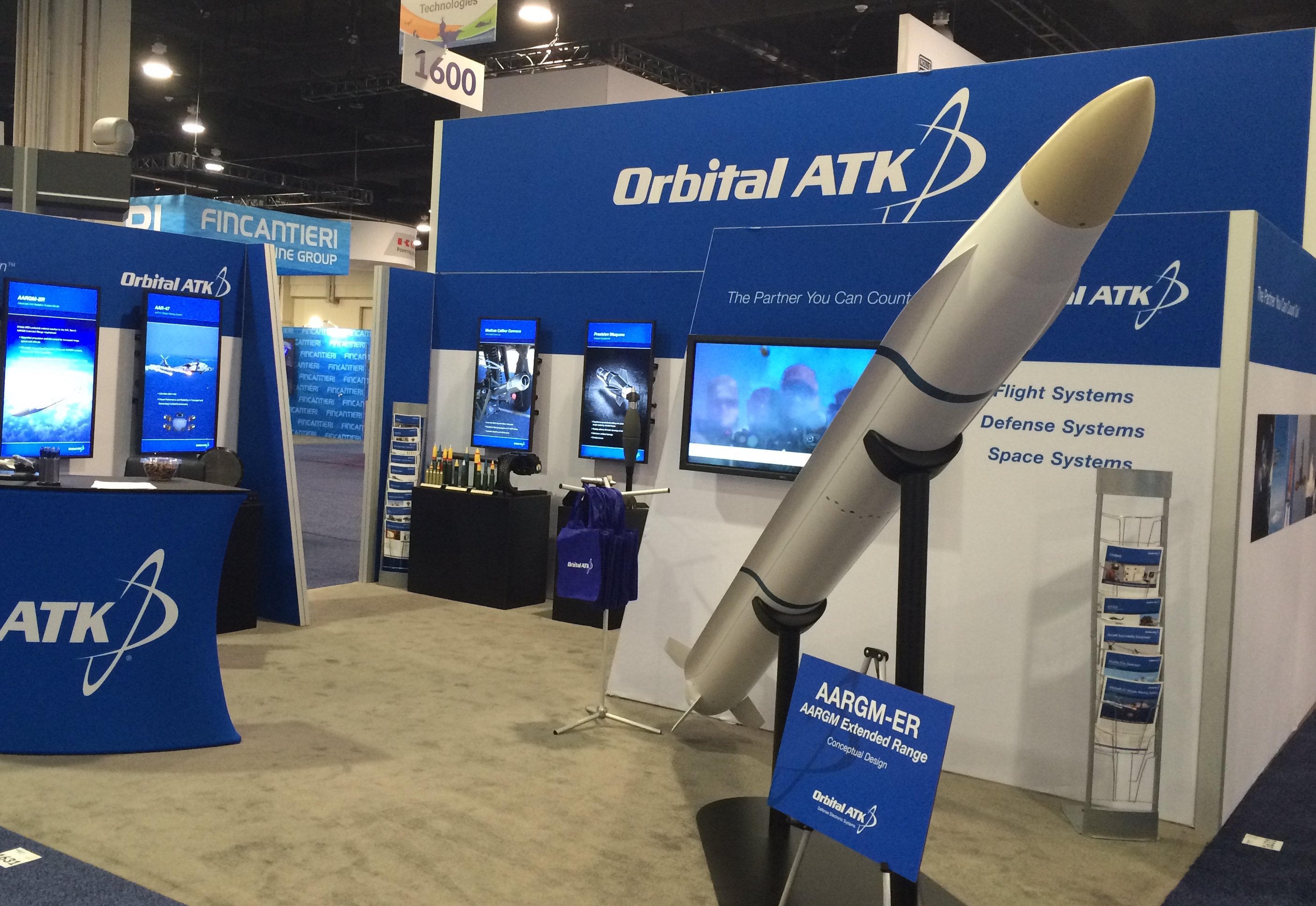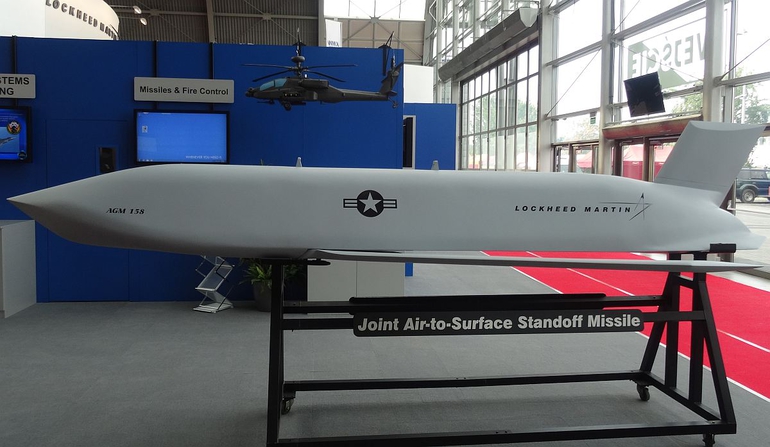Strona główna
Anti-Radiation Missiles for the Polish F-16. Recovering the Capabilities [ANALYSIS]

Polish Ministry of Defence is planning to acquire the AARGM anti-radiation missiles, as this would provide the Air Force with greater capabilities of operating in A2/AD environment. The anti-access/area denial threat has been developing in the direct vicinity of Poland throughout the recent years. Before the missile becomes a valid addition to the arsenal, the new assets also need to become a part of the unified Polish military’s combat system.
AGM-88E AARGM (Advanced Anti – Radiation Guided Missile) is a version of the HARM missile that has undergone an in-depth upgrade. The new version of the missile utilizes the old propulsion section, some of the old design and the old warhead. It includes some new solutions though, namely a digital guidance and radar signal detection system, a millimetre radar, net-centric data exchange suite, and an INS/GPS guidance system.
The above elements make it possible to expand the scope of missile’s applications. Thanks to sensor fusion, AARGM could be used to act against time-sensitive targets, not only with regards to radars or radio-signal-emitting threats.
The missile could also be used against radars that have been turned off or that are on the move. The missile can also autonomously select the most dangerous threat, on the basis of its target profile database that includes electromagnetic and 3D signatures.

AARGM is being continuously manufactured by the Northrop Grumman Innovation Systems company (formerly known as Orbital ATK), with the United States and the foreign users in mind. Since the very beginning, Italy has been an active partner in the project. Australia also procured the missiles following the FMS procedures. Meanwhile, Germany has made initial decision to acquire the missile. The 500th AARGM has been delivered in mid-2017. The company is also working on a new AARGM-ER variant that has twice the range of the original and also travels at a higher speed. The AARGM-ER is to use guidance system of the AARGM variant, fusing it with a new design making it possible to fit the effector in the weapons bays of the 5th generation fighter aircraft, such as the F-35.
Conceptual work has also been initiated, with regards to possible launching of the missiles from land-based launchers, and potential integration of the AARGM and AARGM ER missiles within the IBCS system. All of that work is being performed within the framework of the Northrop Grumman company that became the owner of Orbital ATK.
AARGM For Poland
Back in September 2018 the press department of the Polish Ministry of Defence provided Defence24.pl with information, concerning the acquisition of the AARGM missile by Poland. Following the analytical-conceptual phase of the procurement process, a relevant (internal) request has been approved by the Polish MoD. The Ministry also assumed that the AARGM missiles would be procured within the scope of planning horizon, defined for the years 2017-2026. Let us recall the fact that Armed Forces Development plan for that period has been approved towards the end of 2018. Meanwhile, the new Technical Modernization Plan covering the term until the year 2026, is to be adopted until February. Without the new Technical Modernization Plan, the MoD cannot make commitments assuming that financing would be required after 2022.
The Ministry of Defence also announced that it has sent Letter of Request for Price and Availability to the US, which is the first step towards procuring the missiles in line with FMS. The official release issued by the MoD suggests that the request itself concerned the AARGM-ER and AARGM missiles, and that the US has issued a response. The Ministry did not disclose the details of that response.
The unofficial information obtained by Defence24.pl suggests that the US government have presented a proposed AARGM procurement schedule, along with the price. However, no answer has been provided with regards to AARGM-ER, as development works concerning this effector are still going on and the missile has not yet been introduced into the inventory.
Furthermore, the introduction schedule concerning the AARGM missile is not known in case of Poland. What we know though, is that the procurement would happen within the framework of FMS. In order to acquire the missiles, it is required to place a Letter of Request concerning the AARGM acquisition, and to receive a consent of the Department of State and of the Congress. Any rejection on the part of those entities is not really plausible. Congress will probably be notified and informed about the maximum scope and amount of the order.
Another step is defined as receiving the Letter of Acceptance which, at the same time, is an offer issued by the government. As in case of any FMS agreement, following negotiation and conclusion, the elements of the Polish order would be contracted via the US DoD. It is assumed that the process, starting from conclusion of the contract would last not less than a year, including the negotiation. According to the information released by the manufacturer, completion of the order would take another two years. Taking the period required to conduct training and secure the logistics, AARGMs could be ready in around 4 years from the moment when LoR is sent to the US.

However, the missile design also has an impact on the possibility of delivering them to the user. AARGMs acquired in the current variant come in a form of converted HARM missiles, with some of the HARM elements (warheads, body, propulsion units) used in conjunction with new components that are AARGM-specific. Introduction of AARGM is thus conditioned by having the HARM missile at one’s disposal. The countries that are using the HARM effector simply convert the missiles. Meanwhile, in case of first introductions, as it happens in case of Poland, AGM-88B/C missiles would need to be procured from the stock of the current users: US Navy and USAF, above all.
At the same time, the US allies are getting more and more interested in anti-radiation technologies, reacting to the evolution of the European security environment. Slovakia, Bulgaria, Romania (Bucharest willing to introduce extra fighters), and most probably, Croatia all declared their willingness to acquire the F-16 jets. Some of the aforesaid states are considering acquisition of anti-radiation missiles for the purpose of establishing counter-A2/AD capabilities. All of the above, fused with the ongoing US Navy procurement, could mean that the pool of missiles available for conversion would be depleted fast, and thus deliveries could also take quite some time.
Meanwhile, the AARGM-ER effector is at the early stage now. Achieving IOC in the US aviation is expected to happen, according to the DoD’s 2019 Budget Request, towards the end of FY2023. The above means that the equipment would be available around 2025, after achieving full rate production, if the missiles are acquired via a standard FMS procedure. Considering the negotiation, production and training timeline, operational capability is only available to be achieved for those missiles around 2030. Potential acceleration of the process thanks to the “yockey waiver” (applied in the Wisła programme for instance, to speed up the FMS acquisition) could make it possible to shift that date to late 2020s, should the MoD decide to acquire the missile and a special consent is issued by the US Government.
AARGM missiles, should LOR be issued in 2019, could achieve operational capability on the Polish F-16 around 2023, a few years before potential introduction of new generation missiles (along with the new Harpia fighter aircraft).
In circumstances as such, the management system concerning the anti-radiation missiles could be created earlier on. This refers to proper weapons training which would also cover use of the armament with other elements of the battle system, tactics, systemic target database upgrades or inclusion in the allied counter-A2/AD system. The article mentions recovery of the anti-radiation capabilities, as earlier on the Polish Air Force was using the Kh-25MP missiles with the Su-22 aircraft.
However, this weapon was designed to act against the older generation NATO air defences, including MIM-23 Hawk or MIM-14 Nike Hercules SAM systems. These threats are entirely different from the ones that have been the benchmark for the AARGM designers and for potential users of the new weapon. Needless to say, both missiles and carrier aircraft are separated by a significant generation gap. Maybe it is worth to think about the AARGM operational doctrine then, in the Polish military.
AARGM - Complementing the “Claws” of the Polish F-16s
The AARGM missiles are planned to be integrated with the Polish F-16C/D Block 52+ fighter aircraft. The F-16s have been operated by Poland for little over a decade now. Furthermore, the upgrades of the F-16 proceed according to the plan, within the scope of enhancing the jet’s capabilities. The modernization effort included acquisition of the AGM-158A JASSM missiles, Tape M 6.5 upgrade (2014), acquisition of the AGM-158B JASSM-ER missiles and further procurement of the AIM-120C7 AMRAAM and AIM-9X-2 Sidewinder effectors.

The main goal of introducing the AARGM missile is to enhance the counter-A2/AD environment based around a multi-layered air defence system. Specific features of the AARGM missile would be especially useful here, including: the ability to achieve supersonic speed (typical feature for anti-radiation missiles, most of the air-to-ground PGMs travel at subsonic velocities); passive/active radar and INS/GPS guidance systems fusion; ability to act against stationary and moving targets; Ability to be a part of a net-centric environment.
The basic scenario in which the AARGM missiles could be utilized assumes that a group of aircraft carrying the missiles, once detecting the enemy IADS radars by using the onboard or AARGM’s sensors, destroys those assets with the missiles, creating a safe corridor for the strike group that is tasked with attacking the protected targets. It is possible to carry out a similar attack against shipborne radar systems.
Anti-radiation missiles may also be useful for expeditionary or crisis response forces, responding to crises below the full-scale war threshold, before the Article 5 procedures are even launched. Being in possession of a capacity to neutralize the enemy air defences once they are detected (even in an A2/AD setting) enhances the response capability at the national level. The capabilities available at hand, without the need to ask the allies for assistance, mean that the potential to deter the potential adversary is increased.
AARGM missiles, thanks to the datalink that is tailored for net-centric operation, may also work in harmony with other systems. For instance, by designating the radars in range of own gun (howitzer) and rocket artillery assets. Thanks to the above, these may be attacked by the latter systems, or even land-based AARGM launchers in the future. The very same missiles can be used to detect and classify shipborne radars. Then, relevant data can be transferred to the systems owned by the Navy.
In any case, the main requirement is to have a proper, net-centric command system at one’s disposal. IBCS is a system as such. It has been acquired within Phase I of the Wisła programme. It is proposed that this system finds a broader application in the Polish military. A concept has been created in the United States of America to make use of the IBCS as an element of a common system for controlling air defenses and land-based long range artillery assets. Also, the conceptual work is going on, aimed at integrating IBCS with AARGM and other air platforms.
Creating a net-centric C4IS solution is time-consuming, it requires coordination and involvement of numerous departments of the MoD and of the military. However, this may multiply the potential of the armament systems operated by the Air Force and air defence components. It may also act as a force multiplier for artillery and air defence systems of the land forces and of the navy. Within that context, Harpia new generation fighter procurement is also relevant, since from the very beginning, the new aircraft shall be prepared for operation in a net-centric environment. Possibly, delivery of the new jets could happen in parallel with delivery of the AARGM-ER effector, should a relevant decision be made to procure it.
NATO Anti-Radiation Missiles
Following the introduction of anti-radiation missiles, Poland would join a few NATO nations that have assets as such at its disposal. In Europe, Italy and Germany play a key role within that scope, operating the Tornado ECR. Italian Tornadoes have already been integrated with the AARGM effector. The Germans, meanwhile, are planning to procure the missile soon. Should threat emerge in Europe, probably the US F-16 would be involved in the activities, having the modernized HARM missile at their disposal. Meanwhile, for instance the British have no dedicated anti-radiation weapon system at their disposal, as the ALARM missile has been withdrawn from use.
Introduction of armament of this class could also be an occasion to establish a closer cooperation with the allies. Effective utilization of this kind of armament always requires a variety of scenarios, training and the Air Force shall be prepared to counter as wide spectrum of electromagnetic emissions as possible. It shall be expected that the Polish pilots would play a significant role during the allied SEAD/DEAD exercises. Cooperation and electronic warfare/reconnaissance capabilities will also be required, also to define and determine the threat profile.
What’s next?
Introduction of the AARGM missile into the inventory of the Polish Air Force would translate into better ability to work in an A2/AD environment. SEAD/DEAD capabilities would also be restored. This is especially important, with consideration given to the evolving threats in the region. AARGM will also complement the air-to-ground arsenal of the Polish jets.
Establishment of anti-radiation capabilities shall take place in a gradual manner, and in relation to assets dedicated for the purpose of carrying out reconnaissance or communications. In the future, the anti-radiation missiles may become an element of a net-centric battle system fusing the capabilities of fighter aircraft (including new generation fighter aircraft) anti-aircraft systems or even rocket artillery. A system as such, consisting of a number of elements, will heighten the combat potential available, within the context of threats emerging on the Eastern flank.
